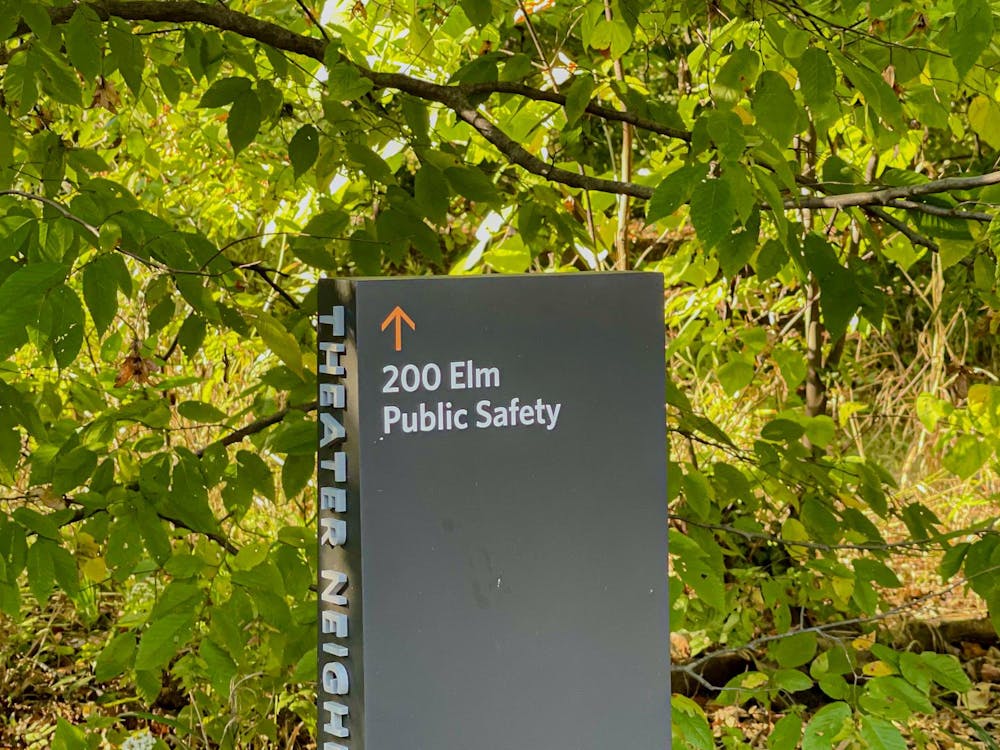Turner Construction Company, the firm leading the development of the Arts and Transit Neighborhood, did not make use of temporary supports to hold up the canopy of the Dinky station on Sept. 19, the day the canopy collapsed onto the railroad track bed, Turner Vice President for Communications Chris McFadden confirmed to The Daily Princetonian Tuesday night.
Turner’s summary incident report, authored by project executive Edward Card, was submitted to the University on Oct. 7 and to the town council on Tuesday. The report did not disclose that the demolition did not use the supports.
Prior to the project, the company had determined that temporary supports were unnecessary. However, the company has found through its investigation that the structure was internally deteriorated in ways that were not previously apparent, McFadden confirmed.
In the wake of the accident, the University has made plans to conduct a peer review of the demolition plans for the two structures that are yet to be removed from the site, University Spokesperson Martin Mbugua confirmed. The plans, developed by Turner and its subcontractor LVI Demolition, will be reviewed by a team including a licensed engineer and a third-party project manager.
The overhead canopy attached to the former Dinky station building collapsed on Sept. 19 as a result of an intentional attempt to remove the canopy that went awry. The report was submitted in response to requests that Council members made last month for an investigation into the cause of the collapse.
On the day of the accident, construction employees cut a two-foot section of the canopy connecting it to the station building, with plans to remove the canopy over the next two days. The collapse, which occurred around 4:30 p.m. after the workers had left for the day, prompted a search-and-rescue mission to determine whether any workers or students had been trapped under the canopy.
Industry standards stipulate that temporary supports such as lumber or scaffolding should have been used to support the canopy before its removal, according to Barry Schmidt, the president of Schmidt Construction Consulting.
“Relocating an old structure is not routine. So there’s always a high probability of something going wrong, but that should be understood by those involved,” Schmidt said in reference to the accident, adding that the weakness in the structure may have been related to the canopy’s age.

The procedure used to remove the Dinky canopy was rare and should have been supervised by a licensed engineer who specializes in this procedure, Schmidt said. He added that it should have been the engineer’s responsibility to ensure that there were sufficient temporary supports in place to hold up the structure.
Prior to the removal procedure, Turner and LVI employees inspected the canopy structure and determined it was sufficient to uphold the canopy, McFadden said. The companies did not call upon an engineer to design and install a temporary support structure of any kind.
Turner subcontracted the demolition work to two firms: The canopy demolition was contracted to LVI Demolition Services, Inc., while the platform demolition was contracted to EIC Associates, Inc.
Representatives from Turner and LVI made plans for the removal of the canopy at a walk-through meeting on Sept. 5, the report said. They planned to raise workmen in a scissor lift under the canopy to cut a section of the wood rafters that attached the canopy to the south Dinky station building. This section needed to be removed prior to demolishing the canopy in order to avoid potential damage to the station building, according to the report.

Demolition work and debris removal for the canopy structure was scheduled to be completed over two days, beginning on Sept. 19.
Representatives of Turner and LVI met at 7 a.m. on Sept. 19 to plan for the canopy demolition scheduled for that day, where they reportedly reinstalled the site fence to ensure the site’s security and reviewed the equipment to be used in the procedure.
LVI workers cut a two-foot wide section from the canopy at approximately 2:30 p.m. They left for the day at 3:15 p.m.
About half an hour later, an LVI foreman and a Turner superintendent visually observed the canopy structure and found no evidence that the canopy was exhibiting stress or had become misaligned, according to the report. A senior project manager for Turner also saw no evidence of stress when he observed the structure at approximately 4 p.m.
Turner learned of the collapse at approximately 4:30 p.m., after it was notified by the University’s Department of Public Safety, the report states. Turner then notified LVI of the incident and had the site cordoned off.
Emergency rescue teams from multiple state and local agencies searched the area to confirm that no one had become trapped under the debris. They completed their search at about 9:30 p.m., when the University and Turner began cleanup operations.
To continue the debris removal process, representatives from Turner and LVI met at the site on Sept. 20 at 7 a.m., where they again reconfirmed the site’s security and reviewed the equipment to be used for the debris removal. The removal was finally completed by LVI at approximately 1:30 p.m..
Turner is one of the largest contractors in the nation, according to the Engineering News-Record. On Monday, a man was killed in an accident on a Turner-managed construction site at Levi’s Stadium in Santa Clara, Calif., according to CBS San Francisco. It was the second death to occur at the site.
Turner's summary report will be discussed at an Oct. 28 meeting of the town council.







